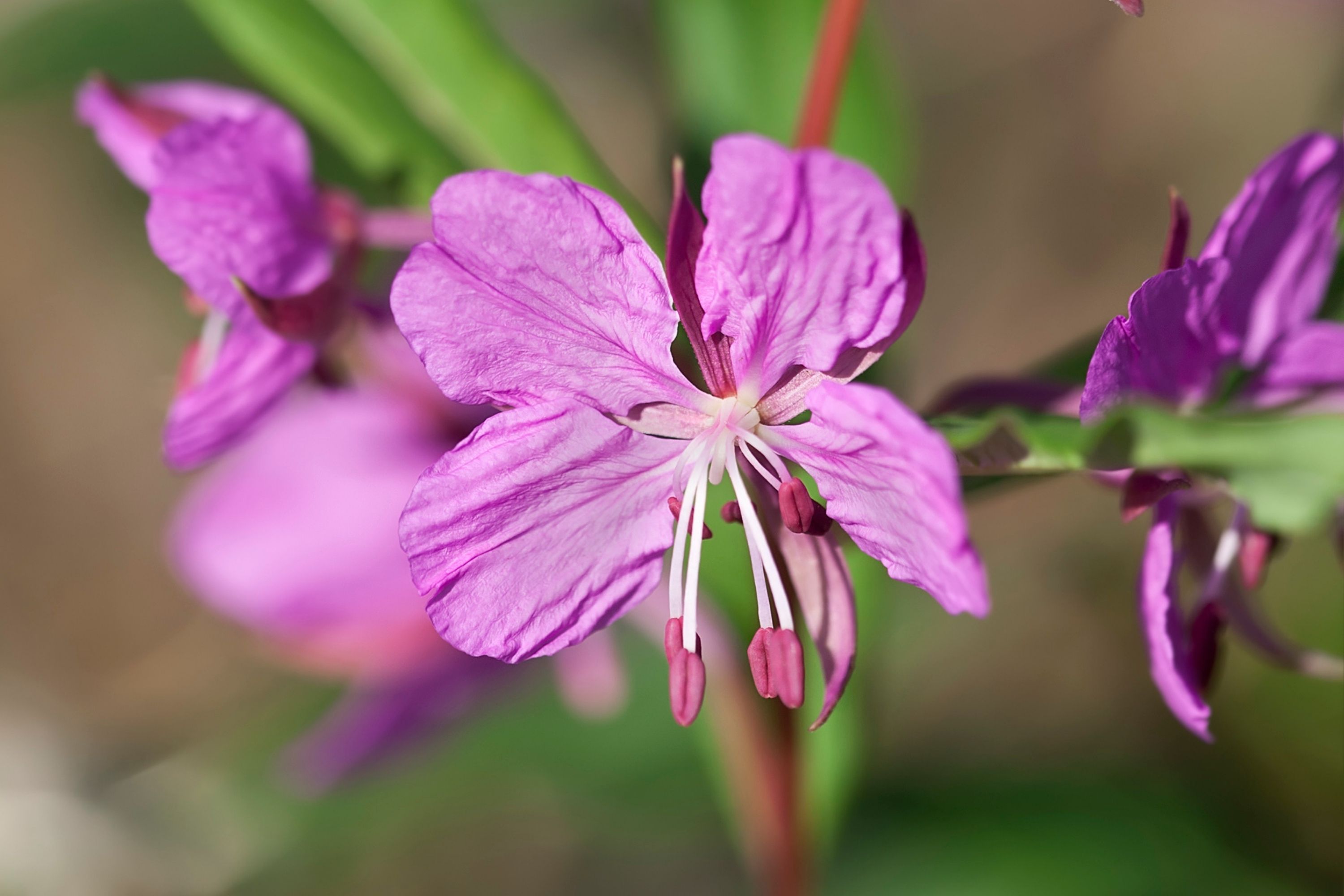Fireweed
(Epilobium angustifolium)

Description
Epilobium angustifolium, commonly known as fireweed or great willowherb, is a perennial flowering plant that belongs to the family Onagraceae. It is a widespread species that can be found in temperate regions of the Northern Hemisphere, including Europe, Asia, and North America. In this article, we will explore the physical characteristics, habitat, uses, and cultural significance of Epilobium angustifolium. Physical Characteristics Epilobium angustifolium is a tall, herbaceous perennial plant that typically grows to a height of 1.5 to 2 meters (4.9 to 6.6 feet) and has a spread of up to 1 meter (3.3 feet). Its stem is erect, sturdy, and slightly hairy, with leaves that are long, narrow, and lance-shaped, hence the specific epithet angustifolium. The leaves are arranged alternately on the stem and have a smooth, wavy edge. The flowers of Epilobium angustifolium are pink to magenta in color and are arranged in a long, slender, terminal inflorescence. The petals are deeply notched and have a frilly, ruffled appearance. The flowers bloom from mid-summer to early autumn and are attractive to bees and other pollinators. After the flowers have faded, the plant produces a tall, cylindrical seedpod that splits open to release numerous small, feathery seeds that are dispersed by the wind. Habitat Epilobium angustifolium is a common plant that can be found in a variety of habitats, including meadows, forest clearings, along roadsides, and in disturbed areas such as abandoned fields or burned areas. It prefers moist soils and can grow in both acidic and alkaline soils, making it adaptable to a range of environmental conditions. Fireweed is often one of the first plants to colonize an area after a fire, hence its common name. Uses Epilobium angustifolium has a long history of medicinal use by various indigenous cultures. The plant has been used to treat a variety of ailments, including gastrointestinal disorders, respiratory infections, and skin conditions. The leaves and flowers of the plant are rich in antioxidants and have anti-inflammatory properties, making it a popular ingredient in natural remedies. Fireweed is also used as a culinary ingredient. The young leaves and shoots can be eaten raw or cooked, and the flowers can be used to make a sweet and slightly tangy jelly or syrup. The plant is also a valuable source of nectar for bees and other pollinators, and its seeds are a food source for birds. Cultural Significance Epilobium angustifolium has played an important role in the cultural history of the indigenous peoples of North America. The plant is considered a symbol of resilience and rebirth, and its ability to quickly colonize burned areas has led to its association with renewal and regeneration. The plant has been used in various indigenous rituals, including the Sun Dance of the Plains Indians and the Potlatch ceremony of the Northwest Coast First Nations. In addition to its cultural significance, Epilobium angustifolium has also been used for industrial purposes. The plant contains high levels of pectin, a natural thickener, and has been used in the production of paper, textiles, and cosmetics. Conclusion Epilobium angustifolium, or fireweed, is a versatile and resilient plant that has played an important role in the cultural and natural history of the Northern Hemisphere. Its physical characteristics, adaptability to a range of environmental conditions, medicinal and culinary uses, and cultural significance make it a valuable and interesting species to study.
Taxonomic tree:







